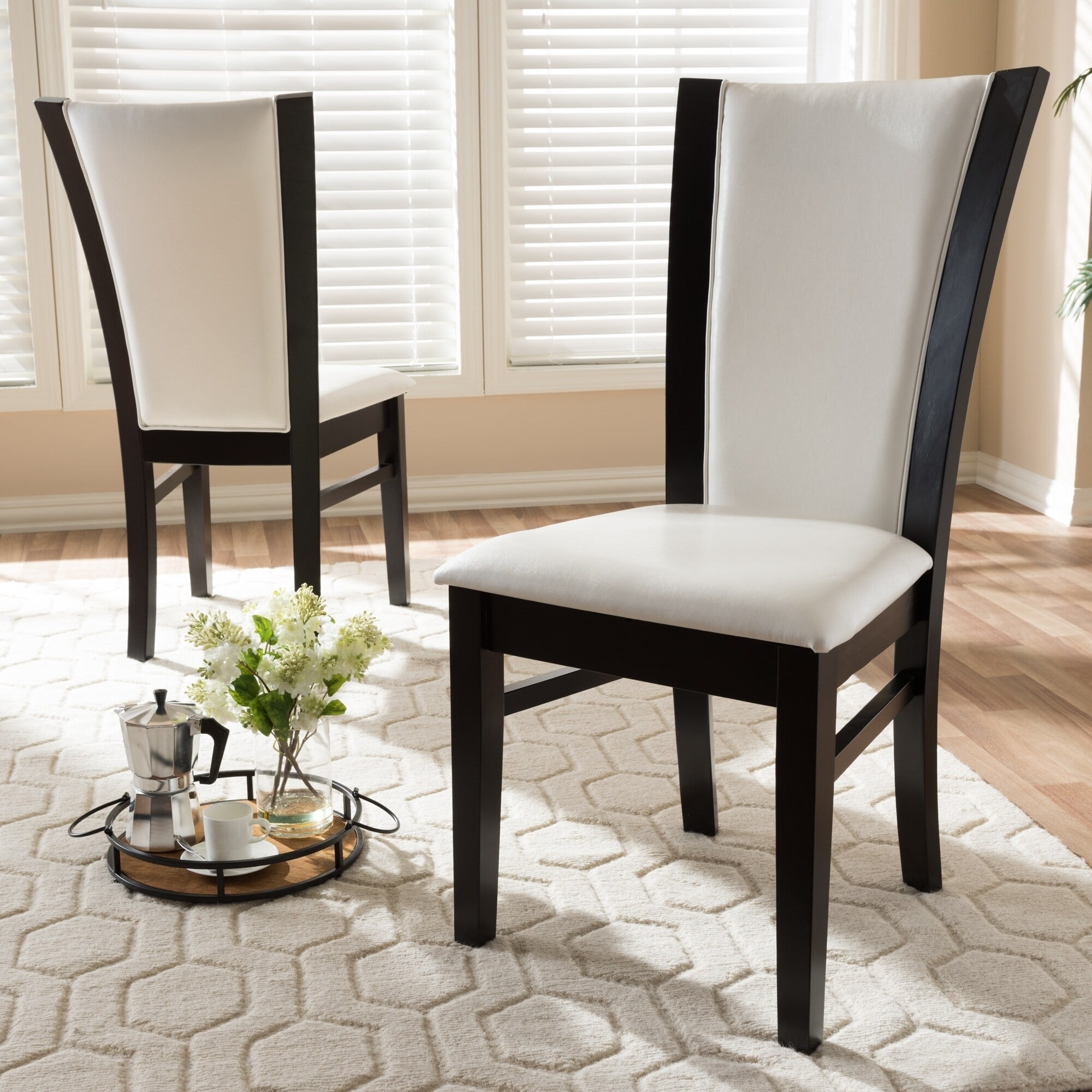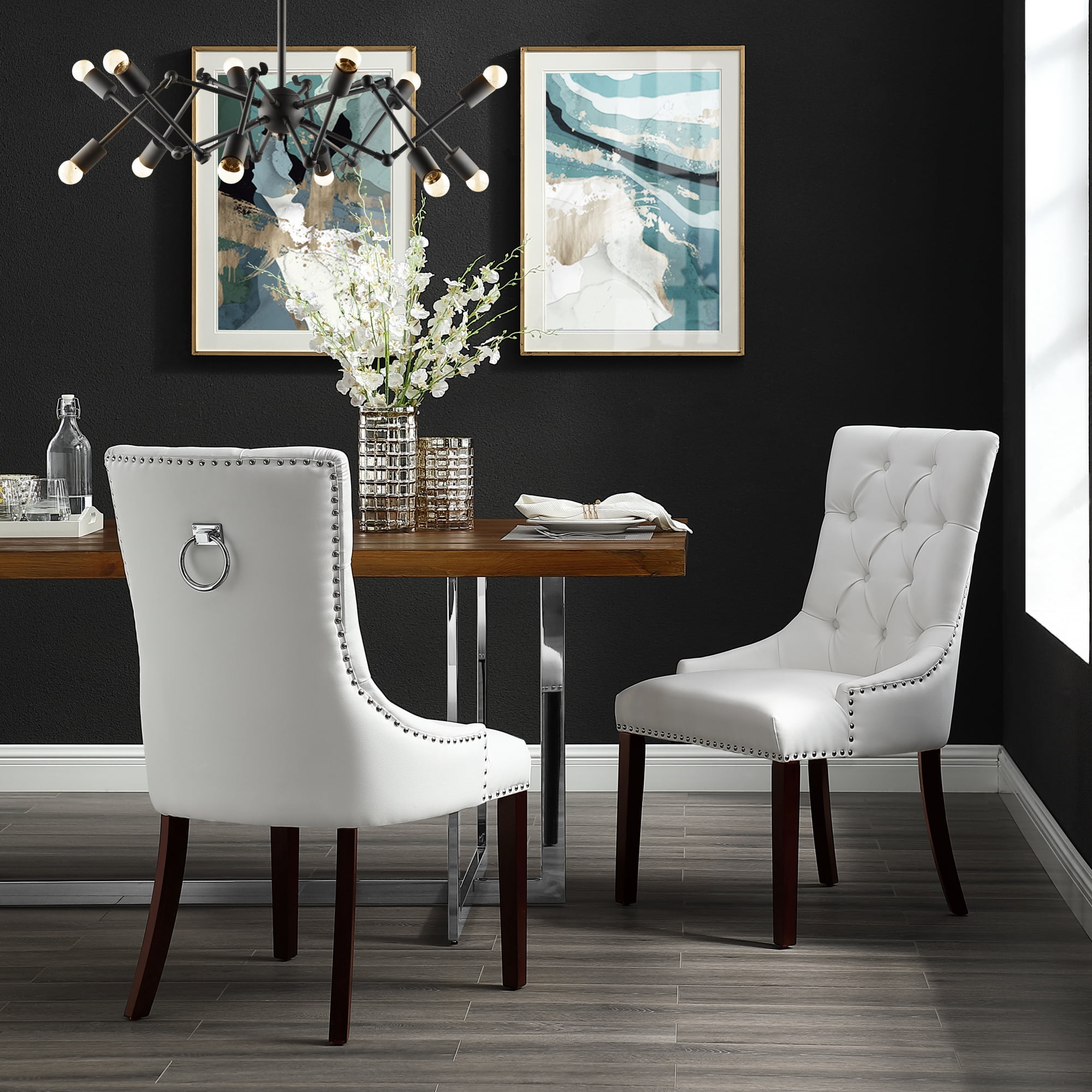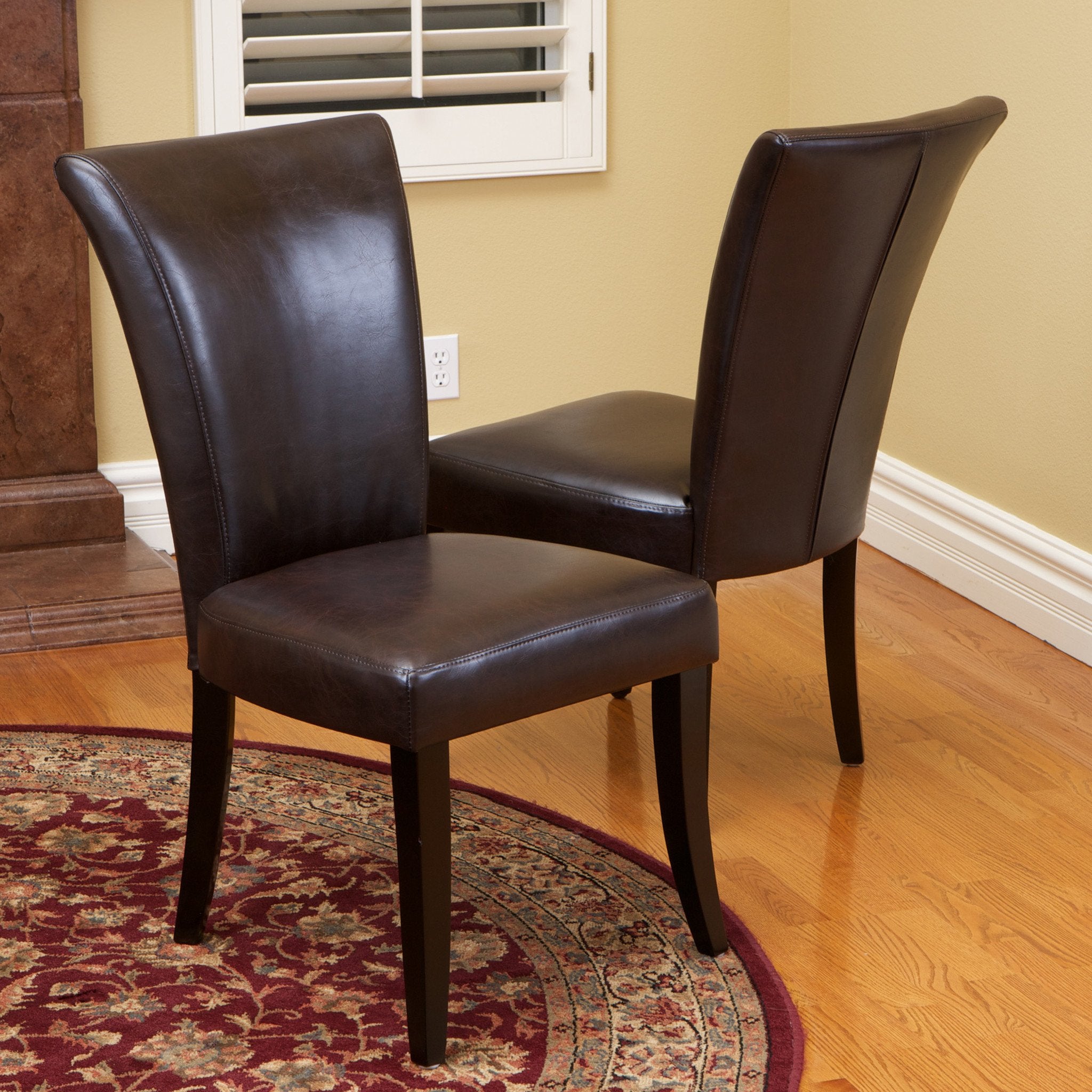Types and Styles of Leather Upholstered Dining Chairs

Right, so you’re after some banging leather dining chairs, yeah? Loads of choice out there, from proper posh to something a bit more, you know, chilled. Let’s break it down.
Leather upholstered dining chair – Choosing the right leather dining chairs can totally transform your gaff. Think about the vibe you’re going for – modern minimalist, classic glam, or rustic farmhouse – and pick chairs that fit the bill. The leather itself plays a massive part too, from the super-durable stuff to something a bit more delicate.
Leather Dining Chair Styles and Their Characteristics
Different styles use different leathers and have different price points. Here’s a quick rundown:
| Style | Leather Type | Typical Price Range (£) | Key Design Features |
|---|---|---|---|
| Modern | Top-grain, sometimes bonded leather for budget options | 150 – 500 per chair | Clean lines, minimalist design, often metal legs, potentially bold colours |
| Traditional | Full-grain leather, often in darker colours | 300 – 1000+ per chair | Ornate details, button tufting, maybe curved backs, classic wooden legs |
| Farmhouse | Full-grain or top-grain leather, often distressed or in natural tones | 200 – 600 per chair | Simple, sturdy design, often wooden legs, possibly slightly weathered look |
| Industrial | Top-grain leather or even faux leather | 100 – 400 per chair | Metal frames, exposed rivets, often a slightly worn or aged look, simple shapes |
Leather Types: Durability and Maintenance
The type of leather massively impacts how long your chairs last and how much effort you need to put into keeping them looking mint. Here’s the lowdown:
- Full-grain leather: This is the top-notch stuff, mate. It’s the strongest, most durable, and develops a proper patina over time. It’s also the most expensive, but totally worth it if you want something that’ll last ages. Cleaning is pretty straightforward – just wipe it down.
- Top-grain leather: A step down from full-grain, it’s still pretty robust, but the top layer has been sanded down and often coated, making it less durable and prone to scratches. Still pretty good though, and easier to clean than full-grain.
- Bonded leather: This is the budget option. It’s made from leather scraps and fibres bonded together with a polyurethane coating. It’s not as durable as the other two, and it doesn’t age as gracefully. It’s easy to clean, though.
Ergonomic Considerations in Leather Dining Chair Design, Leather upholstered dining chair
Comfy chairs are key, right? You don’t want to be slumped over after a big Sunday roast. Here’s what to look out for:
- Back support: A good backrest provides lumbar support and helps you sit up straight. Look for chairs with curved backs that follow the natural curve of your spine.
- Seat height: The seat should be at a height that allows your feet to rest comfortably flat on the floor. Too high or too low and you’ll be uncomfortable.
- Armrests: Armrests can provide extra support and comfort, but they shouldn’t be too high or too low. Ideally, your forearms should rest comfortably on them when you’re sitting.
Buying Guide and Considerations for Leather Dining Chairs

Right, so you’re after some banging leather dining chairs, are you? Choosing the right ones can be a proper faff, but don’t worry, we’ll sort you out. This guide’ll help you snag the perfect chairs for your gaff, without breaking the bank or ending up with something that looks like a right dog’s dinner.
Step-by-Step Guide to Selecting Leather Dining Chairs
Choosing your new chairs is a bit like choosing your mates – you need to find ones that fit in and vibe with you. Here’s a step-by-step guide to make sure you don’t end up with a right load of rubbish.
- Set a Budget: First things first, how much dosh are you willing to splash? Knowing your budget helps narrow down your choices and prevents buyer’s remorse later. Think about how many chairs you need and adjust accordingly. A set of four budget-friendly chairs might cost less than one super-expensive, designer chair.
- Decide on the Style: What kind of vibe are you going for? Modern, rustic, classic, minimalist? The style of your chairs should complement your existing décor. A sleek, modern chair might clash horribly with a traditional dining table, innit?
- Measure Up: Measure your dining space! You need to know how much room you have and ensure the chairs fit comfortably around the table without looking cramped. Consider the size and shape of the table and the amount of space you need for people to move around.
- Think About Use: How often will the chairs be used? If it’s just for special occasions, you might not need the most durable leather. But if you’ve got a family that’s always chowing down, then you’ll want something that can take a bit of a beating.
- Choose Your Leather: Leather comes in loads of different colours and textures. Think about what will go with your existing décor and how much maintenance you’re willing to put in. A light-coloured leather might look stunning, but it’ll show every little mark, whereas a darker colour will be more forgiving.
Leather Colour and Texture: Impact on Aesthetics
The colour and texture of your leather chairs can massively change the look of your dining room. A creamy, soft leather creates a really luxe, sophisticated feel, while a dark brown, rugged leather will give it more of a rustic, homely vibe. Think about the overall colour scheme of your room – a bold red leather chair might look amazing against a neutral background, but could be a bit much if everything else is already colourful. The texture of the leather also matters – a smooth leather looks sleek and modern, while a textured leather adds a bit more character and visual interest. Imagine a smooth, black leather chair against a minimalist white table – pure class!
Retailer Comparison: Online Marketplaces, Furniture Stores, and Specialty Boutiques
Shopping around is key, mate. Each retailer has its own perks and downsides.
| Retailer Type | Pros | Cons |
|---|---|---|
| Online Marketplaces (e.g., eBay, Amazon) | Massive selection, often cheaper prices, convenient browsing. | Can’t see or feel the leather in person, potential for shipping damage, returns can be a hassle. |
| Furniture Stores (e.g., DFS, John Lewis) | You can see and feel the leather, expert advice available, usually offer warranties. | Generally more expensive, less selection in some cases, might not have exactly what you want. |
| Specialty Boutiques | Unique and high-quality leather chairs, often bespoke options, excellent customer service. | Significantly more expensive, limited selection, might need to wait longer for delivery. |
Care and Maintenance of Leather Upholstered Dining Chairs

Right, so you’ve splashed out on some proper lush leather dining chairs, eh? Top choice! But, like, keeping them looking fresh ain’t just about avoiding sticky fingers. It’s about showing them some love and making sure they last, yo. This guide’s all about keeping your chairs looking mint, no matter what life throws at ’em.
Cleaning Leather Dining Chairs
Keeping your leather chairs clean is dead important, innit? Regular dusting prevents dirt build-up and keeps them looking their best. For spills and stains, acting fast is key, before they set in properly. Different stains need different approaches, though. Here’s the lowdown:
- Dusting: Use a soft, dry cloth or a feather duster to regularly remove dust and debris. Think of it as a quick weekly tidy-up – keeps things looking ship shape.
- Spills (general): Blot up spills immediately with a clean, absorbent cloth. Avoid rubbing, which can spread the stain. For sticky stuff, gently lift it off with a blunt knife or spatula before blotting.
- Water Stains: These are a right pain! Gently blot the area with a clean, dry cloth. If it’s stubborn, you might need a leather cleaner (more on that later). Avoid using too much water, as it can damage the leather.
- Ink Stains: Ugh, the worst! Try gently dabbing with rubbing alcohol diluted with water (a 50/50 mix). Test this on an inconspicuous area first, though, just in case. Again, blot, don’t rub!
- Grease Stains: Baby powder or cornstarch can absorb grease. Sprinkle it on, leave it for a few hours, then brush it off. A leather cleaner might still be needed afterwards.
Conditioning Leather Dining Chairs
Leather, mate, it’s a natural material, so it needs a bit of TLC. Conditioning keeps it supple, prevents cracking, and keeps that lovely sheen. Don’t skip this bit, or you’ll end up with chairs that look proper knackered.
- Choosing a Conditioner: Use a good quality leather conditioner specifically designed for your type of leather (aniline, semi-aniline, or top-grain). Check the label carefully.
- Application: Apply a small amount of conditioner to a clean, soft cloth. Rub it gently into the leather in circular motions, working in small sections. Don’t overdo it, you don’t want it dripping off.
- Buffing: After a few minutes, use a clean, dry cloth to buff the leather to a shine. This helps the conditioner absorb properly and brings out the leather’s natural beauty. Think of it like giving your chairs a proper pamper session.
- Frequency: Condition your chairs every few months, or more often if they’re in a dry environment. This will keep them looking and feeling amazing for years to come.
Visual Guide to Leather Chair Care
Imagine this: You’ve got a soft, microfibre cloth, almost like a fluffy cloud. In one hand, you have a tiny amount of leather conditioner – think a pea-sized drop. You gently rub the conditioner into the cloth, then, with light circular motions, you caress the leather surface of the chair. It’s like giving your mate a comforting head rub, but for leather. You’re working slowly, methodically, section by section. After a few minutes, you swap to a fresh, dry cloth and gently buff the leather until it gleams. It’s a meditative process, really. The result? Chairs that look like they’ve just stepped out of a furniture magazine. Proper lush.
